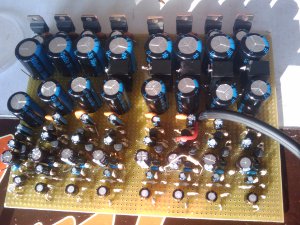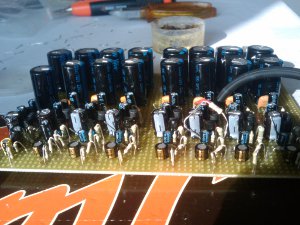abechap024
Well-known member
The Trident will sound better than any type of built to a budget type consumer/ prosumer gear. Period. Whether or not the difference is night and day or not is not always as obvious as other times. What could be making the comparison hard is that your running everything through the same board/DA. Looking at the manual for the yamaha n-12 safe to say the inserts are going through some coupling caps and an extra opamp or two before they go to the ADC. And thats at best. But it could be the boards internal preamp has a more direct path to the ADC's because they are built in and don't require all the protection/conditioning type circuitry found on inputs from the outside world.
The two do sound more alike the different. Try recording complete songs with these before jumping the gun. There is always a honeymoon period for me before I find what I really find useful about a piece of new equipment ... or don't. And hey if you can't hear a difference worth justifying, then don't build anymore and sell your builds too me for cheep!
Good luck!
The two do sound more alike the different. Try recording complete songs with these before jumping the gun. There is always a honeymoon period for me before I find what I really find useful about a piece of new equipment ... or don't. And hey if you can't hear a difference worth justifying, then don't build anymore and sell your builds too me for cheep!
Good luck!






